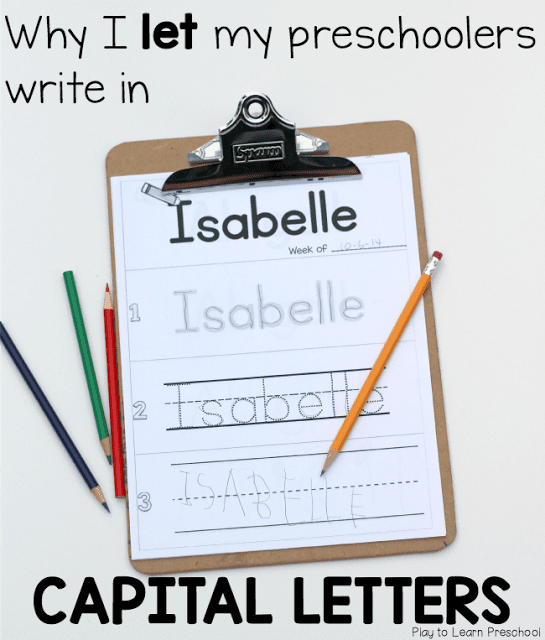 |
| Writing sample of a Pre-K student, age 4.10 |
Young children are surrounded by capital letters.
Capital Letters are easier to recognize and easier to write.
 |
| Writing sample of a Pre-K student, age 5.2 |
Most children can identify more capital letters than lower case.
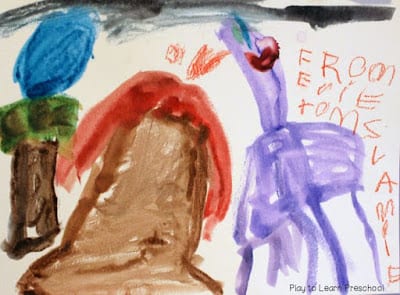 |
| Writing sample (and artwork!) from a Pre-K student, age 4.8 |
Most importantly, learning to write is a developmental process.
- Infants crawl, pull up to standing, take a few steps, then toddle around before they learn to walk “properly.” We would never discourage a toddler from cruising the furniture out of fear that it would foster bad walking habits!
- Children learn to babble before they speak in single words. Then they string a few words together before making a complete sentence. Once they’ve mastered that, they may be able to carry on longer conversations. We would never discourage a child from saying, “Mama, up!” out of fear that he would develop bad speaking habits. Eventually, he will learn to say, “Mommy, please pick me up!”
- The same is true with writing. Children begin by scribbling. Then they make letter-like symbols and start to string random letters together. As they learn more about their name, they write its letters, even if some are reversed or missing. We do not discourage this type of writing, or insist that the children write their names conventionally! It is just a part of the process — not a bad habit.
[bctt tweet=”Learning to write is a developmental process. Using capital letters is part of that development. It is not a bad habit!”]
Teachers know their children best.
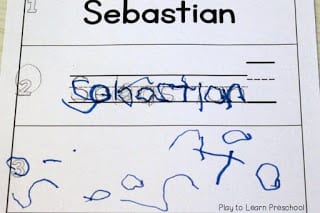 |
| Writing sample of a preschool student, age 4.3 |
Model, Scaffold, and Support
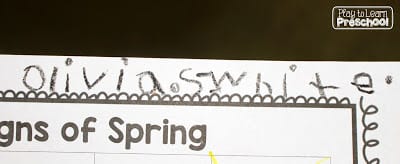 |
| Writing sample of a Pre-K student, age 5.5 |
You can read more about how we teach children their names in these posts:
Many people asked for copies of the sign-in sheets that we use every day. Here they are! EDITABLE NAME PRACTICE PAGES are perfect for your students who are learning how to write their names. You just type in your class list and print customized, differentiated name worksheets for each child. So quick and simple!
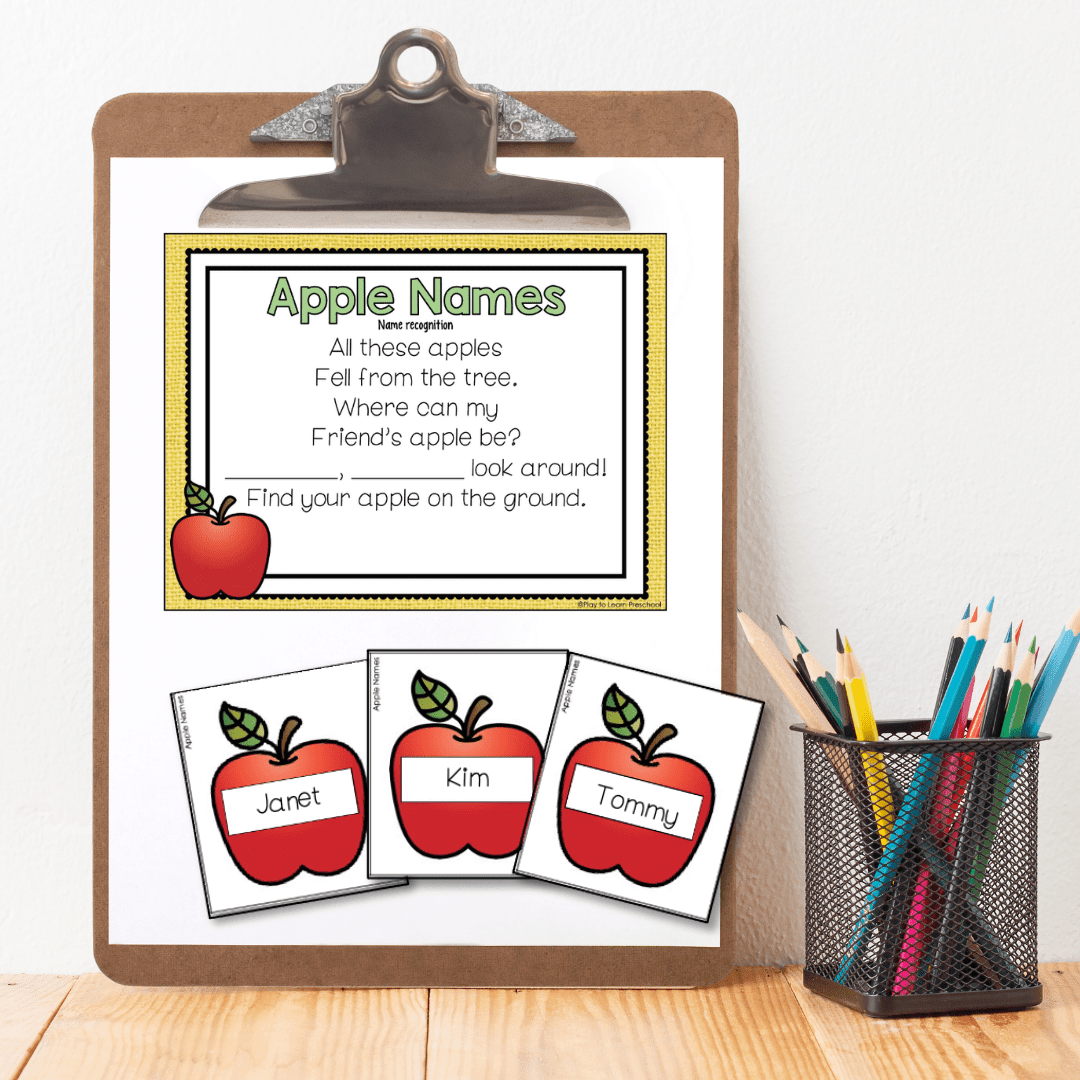
FREE Name Bundle!
Enjoy Free Name resources perfect for your preschoolers!
After you subscribe, you will be redirected to the FREE Name Resources. We respect your privacy. Unsubscribe at any time.
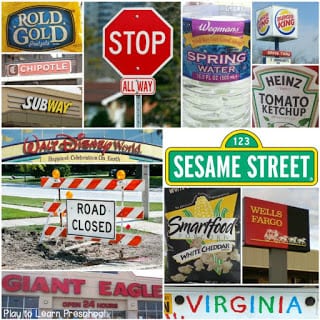


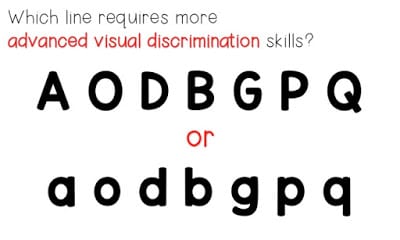
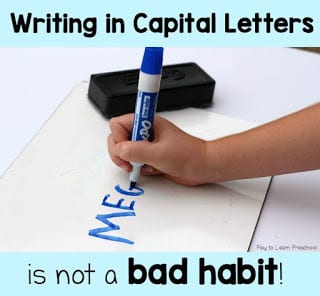
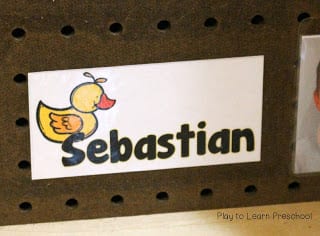
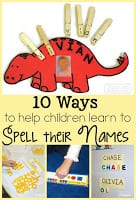
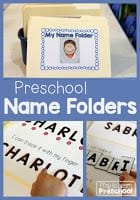
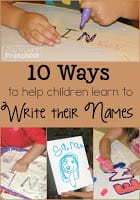
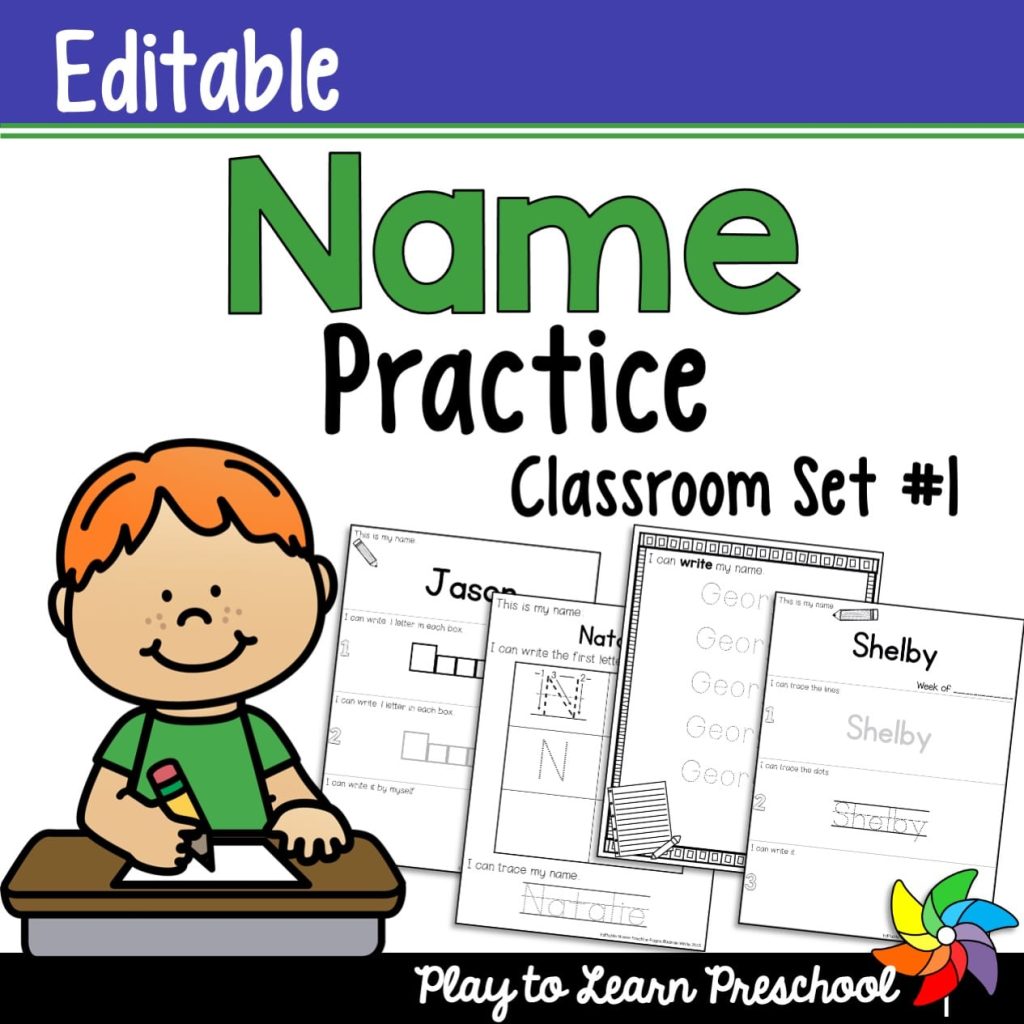
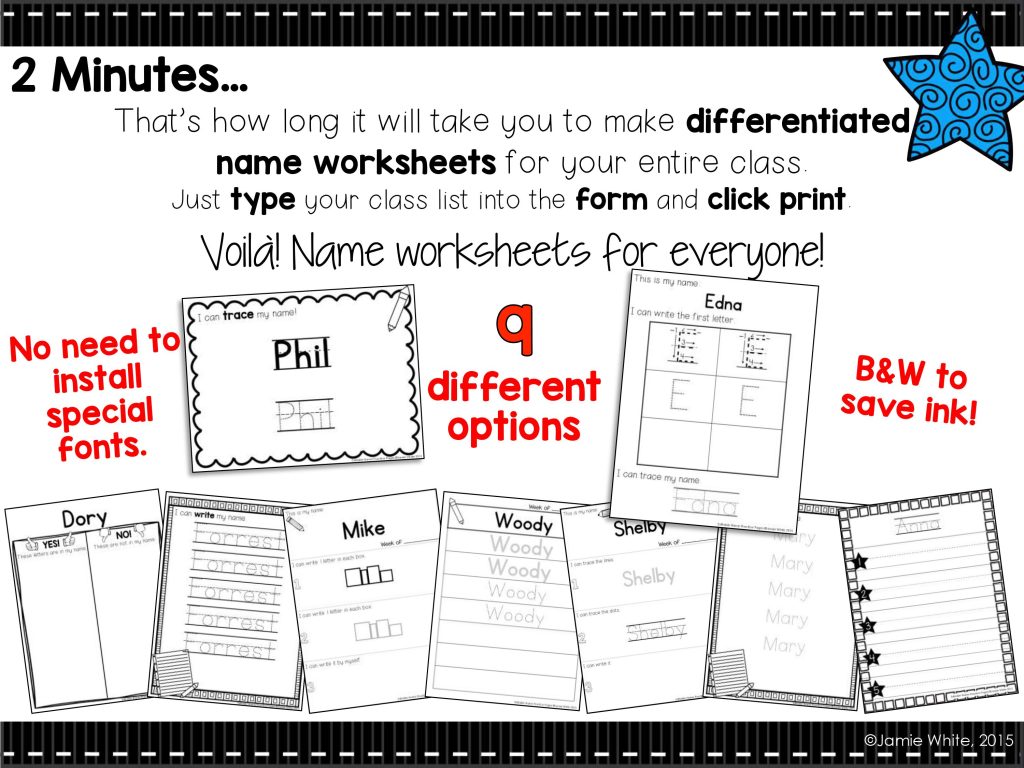
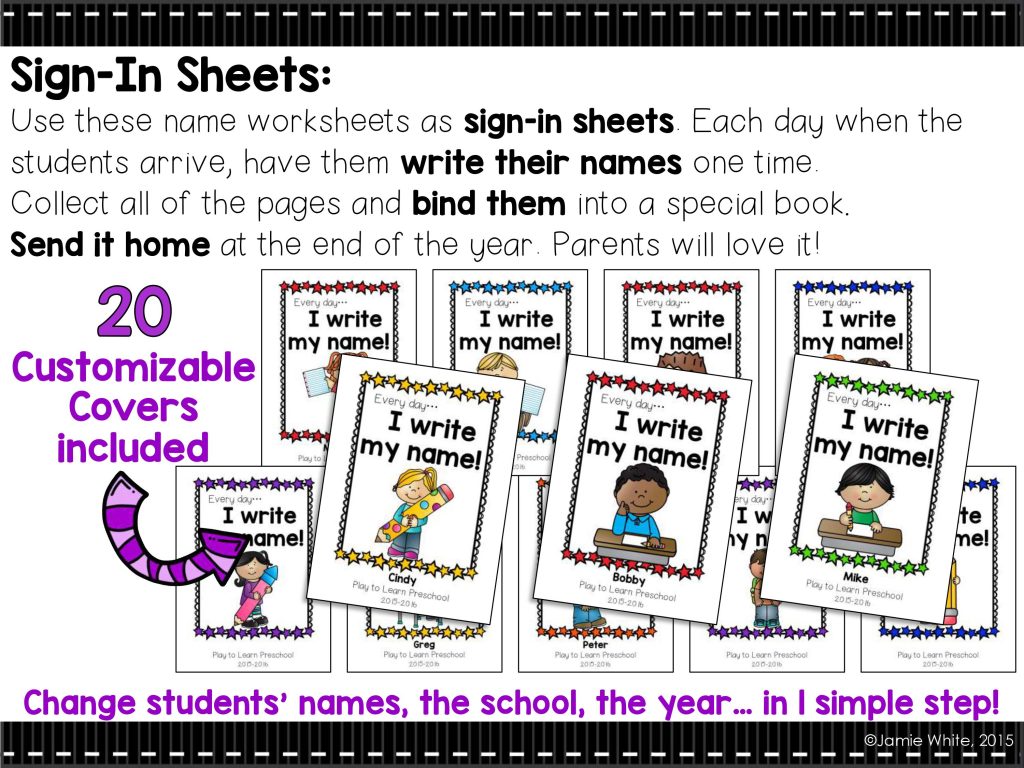
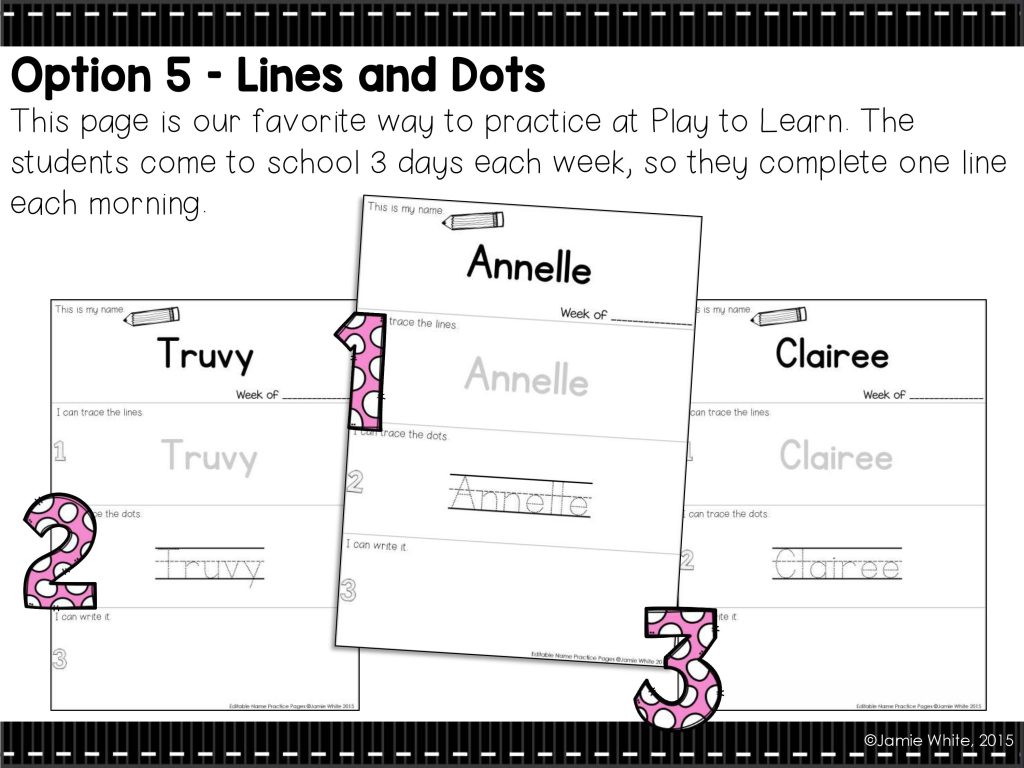
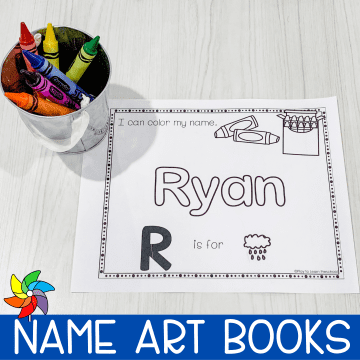
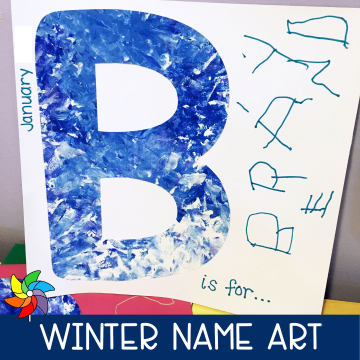
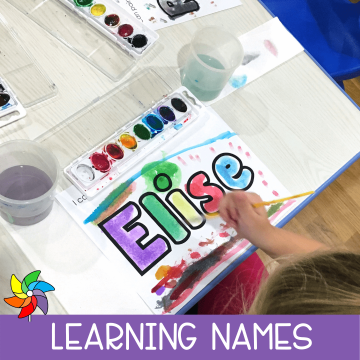
What a GREAT post! Learning to read and write is a developmental thing, just like walking and talking. We are always encouraging and helping our kids to move past one developmental stage to another. Love, love, love! I'm so glad you posted this. Going to share away!
Thank you so much Becky. I completely agree, and I appreciate your support. 🙂
Thanks for this. Love your clear explanations. I totally agree with you. I really get annoyed when teachers further down the line forget what they learned in their Human Development and Educational Psychology classes about preschoolers. We seem to have developed a culture that thinks we can just teach everything earlier to get ahead and it ends up sometimes making kids who are not ready totally lose out.
Thank you Laura. I also get frustrated at times when we expect things from our children that they just aren't ready for yet. We want to follow their lead and develop a strong love of learning!
Thank you for sharing this so clearly and concisely. It is the way studentsshould and need to be taught. Well Done!!!!
Thanks for your comment Kathy. All teachers need to do what's best for their children, and this is definitely what's best for mine.
What a beautiful explanation for your choice!
I definitely agree, capital letters are easier to recognize for preschoolers, and with mostly straight lines, easier to write. I started both of mine with writing their names in all capital letters. It was not a difficult transition for them to start learning to write their name with a capital letter and lower case letters when the time came.
That's my experience, too, Christina. When the students have a solid grasp of their name in capitals and they have good fine motor skills, the transition to lower case is rather easy. It's important that we follow their lead! Thanks so much for your comment.
This is so SPOT on!!!!! I love the part where you said "All of the names that are posted (everywhere!) in our classroom are written with an initial upper case and subsequent lower case letters. Every time the children see me write their names, it is conventional." It is only when we see that they have the fine motor and the letter knowledge is it that they will really be ready to move from all caps to upper and lower. I can not tell you how much I LOVE this post. When a kiddo can "write their name" even if it is in all upper or a mixture of upper and lower they have confidence. Those S's and E's really get the kids. When they are ready they will switch.
Thank you for your comment! Confidence is so important, and those little letters are tricky. Have a great school year.
Excellent explanation for doubters!
Thanks. I think it is a good topic for discussion!
Cursive makes p d and be look different… it is also like a child's scribbles. That is why Montessori starts with it.
That's very true. I think cursive is easier to write, but because most of the books and print that children read are in manuscript many programs teach children to write those first.
Thanks for sharing your reasons behind your decision Jamie. Developmentally appropriate practices tend to fall by the wayside with the push for children to do more sooner. I like that you meet the children where they are, but continue to model the conventional spelling for them.
Tammy
The Resourceful Apple
Thank you so much Tammy. It seems to be harder and harder to stick what we know to be developmentally appropriate with the rush to get everyone reading so early.
I AGREE!!!! As a pediatric Occupational Therapist this is what I continually try to inform parents, teachers, etc… Children need to work on skills where they are at developmentally and many 4 year olds may not even have the pre-printing skills to print all capital letters, never mind the lower case letters. If they are expected to print lower case too early they end up drawing letters instead of learning to print which leads to more problems later on! Children need solid building blocks in their foundation of fine motor skills and print! Thanks for your post!
Thanks Heidi! I appreciate your professional opinion.
Do you have the name sheet available to purchase? I would love that for my Kindergarten kids so they can practice writing their name 4 different times 🙂
Hi Christy,
YES! You can make your own name practice sheets for your kids with this:
https://www.teacherspayteachers.com/Product/Name-Worksheets-2204619
Enjoy 🙂
You've opened my eyes! I teach first so I didn't know this but I totally agree and your reasoning makes sense. I was just thinking about teaching Jackson how to write his name now (he can spell it) and I will encourage he start with capitals thanks to you!! Great post as always.
Elyse 🙂
Thanks Elyse! I would recommend following Jackson's lead! Now that he can spell it, keep working on fine motor skills and give him lots of opportunities to write, color and draw. It's likely that he will use capitals until he is closer to 5-years-old. What a lucky little guy to have you as his mom! ~Jamie
We live in Germany and even in kindergarten they can use capital letters. In the first grade they learn upper and lower case letters (they start first grade usually when 6y old). Most students do fine and don't have any problems although they used capital letters till then.
Thanks for your comment, Diana. That's great to hear. It's important that we always consider what is best for the child!
Thanks for the explanation for reasoning behind teaching the capital letters first. I also have a master's degree in early childhood and years of experience teaching 5 yr. old's to write. It is frustrating to the student when they show up to kindergarten writing their names in all caps. It's for that reason that I think it's better to teach it in the way that their teacher will expect it to be written. I think lower case letters are similar in difficulty if you let the students write them large enough. I will continue making sand paper letters, in lower case for our 3 yr. old granddaughter and capitols so,her mommy can teach which ever one she wants her to learn first. (Her mommy uses a really cool app. on her Ipad where the child traces the letters on the screen with their finger. Extra large font, too. Kora loves it.
Thanks so much for your comment, Betty, and for reading the blog. It sounds like you have lots of wonderful things in place to help your granddaughter learn her letters! With few exceptions, our students leave Pre-K and show up for kindergarten writing their names conventionally. I think they feel confident, and not frustrated. I appreciate you weighing in on the conversation!
I teach 3 1/2 year olds who age out to 4 or 4 1/2 in my room. I work in a daycare center. They then go on to the PreK class.
When I first was told to teach them how to write their names, I thought they were too young to learn.
Now, 7 years later, I don’t have a problem teaching them. I trace their name in yellow highlighter, and they rainbow-write their name using 7 colors of broken crayons. I use one capital letter and the rest lowercase letters in their name. The kids do this for a few months, and then they eventually switch to colored pencils to practice proper grip.
I also made my own sandpaper letters, and they trace the letters in their names, one at a time, and then write that letter in sand.
We also cut paper daily for months on end. The kids play with playdough often, and paint and color. I have them open clothespins while engaged in an activity.
Honestly, I haven’t had any problems with the kids learning to write their names using capital and lowercase letters.
I find it’s probably better just to teach them the correct way from the start. That way there is no confusion later.
I just discovered your website, and it must somehow be linked to http://www.themeasuredmom.com because I visited her website first, and wandered into yours. You have such GREAT stuff. I have been copying your ideas and printing them out for use in my room with m y new students this fall. THANKS FOR YOUR HELP AND GREAT IDEAS!!